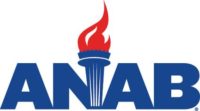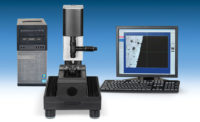BENBROOK, TX –– The Coordinate Metrology Society (CMS) has announced the results of its large-scale, interactive measurement study conducted at the 27th annual Coordinate Metrology Systems Conference (CMSC). The 58-page report entitled “How Behavior Impacts Your Measurement,” focuses on measurement strategies and behaviors of coordinate metrologists. More than 100 conference attendees participated in the data collection activity coordinated by the National Physical Laboratory (UK) assisted by members of the CMS Certification Committee. Metrology is the science of measurement, and professionals in this field work in diverse industries such as aerospace, automotive, power generation, and more. The full report can be downloadedhere .
Authors Keith Bevan from the National Physical Laboratory and Trevor Toman, Metrology Manager at Coventry University, performed statistical analysis of the study and compiled their conclusions into the new report. The criteria of the study’s measurement tasks enabled the authors to examine various training and assessment techniques, such as the evaluation of the participant’s prior learning and experience level, questioning methods, practical task monitoring and demonstration. Nearly a quarter of the participants had less than 3 years of measurement experience, a dozen fell in the midrange of 3 to 7 years of practice, while 69 participants were veteran metrologists with more than 7 years of hands-on experience with various measurement systems.
“The outcome of this study drives home the importance of defined best practices, and understanding measurement fundamentals that enable an individual to make informed judgments about a measurement… irrespective of the technology used whether it is hand tools or 3-D portable metrology systems,” states Keith Bevan. “Clearly, questioning and planning the requirements of the measurement help reduce the possibility of making poor measurements.”
During the two-day study, participants were asked to perform three tasks using portable 3-D coordinate metrology equipment for data acquisition: to measure a door using a combination of a Laser tracker, retro reflectors, and software; to measure an engine compartment using a combination of an articulating arm, probe and software; and to measure a vehicle using a combination of a Laser Tracker, probing, and laser scanning system. The final report reveals various results based on 3-D measurement tasks executed with little or no instruction, as compared to the outcome of 3-D measurement tasks completed using procedures, or a participant guiding an operator with methodology to collect the needed measurements. The study was sponsored by Metrologic Group and its U.S. subsidiary ATT Metrology.
Get our new eMagazine delivered to your inbox every month.
Stay in the know with Quality’s comprehensive coverage of the manufacturing and metrology industries.
SIGN UP TODAY!Copyright ©2024. All Rights Reserved BNP Media.
Design, CMS, Hosting & Web Development :: ePublishing


